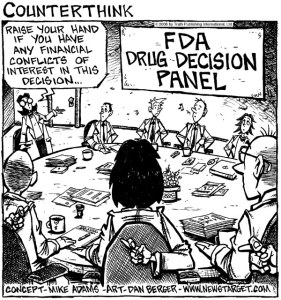 As most of you well know, a certain Calvin Jablonski liked to comment here at Chilmark Research taking some pretty hard shots at the EMR certification organization, CCHIT and the close relationship between CCHIT and the vendor organization HIMSS. Jablonski’s comments raised the ire of the HIMSS executive suite leading to a calling out of the dogs (lawyers) of which we were the humble recipients of their communications.
As most of you well know, a certain Calvin Jablonski liked to comment here at Chilmark Research taking some pretty hard shots at the EMR certification organization, CCHIT and the close relationship between CCHIT and the vendor organization HIMSS. Jablonski’s comments raised the ire of the HIMSS executive suite leading to a calling out of the dogs (lawyers) of which we were the humble recipients of their communications.
In our post on the subject, we were miffed that rather than countering Jablonski’s claims, HIMSS, through their lawyers, sought censorship. We did not comply.
What we countered with was what we thought a great idea:
HIMSS, we at Chilmark Research will gladly offer you the opportunity to guest post on Chilmark Research where, in full view of the public/readership you can provide a point-by-point response to Jablonski’s claims.
Seems sensible to us but for some odd reason, HIMSS has yet to respond to this offer. Is there really something to hide here? Does the cartoon above (simply substitute CCHIT for FDA) accurately portray what is really going on here?
Honestly, we tend to side with the belief that Jablonski is in some way a very disgruntled individual (former employee, contractor etc.) who has some ax to grind and was intimately familiar with some of the inner workings of both CCHIT and HIMSS. But disgruntled or not, Jablonski does raise some broader issues that really need far closer review and scrutiny in light of the recently passed Stimulus Bill and the HITECH Act which will pour some $20B+ into the HIT market.
In today’s issue of Healthcare IT News, Neil Versel does a very good job of reporting on the controversy surrounding the Jablonski post and interviews others in the industry, including yours truly, on what many perceive as a strong potential for conflict of interests between an organization that is charged with certifying EMRs (CCHIT) and one responsible for promoting EMRs (HIMSS).
Many industry pundits, including John Glaser, CIO of Partners and senior member of NeHC (AHIC 2.0) believe that CCHIT will be the one responsible for making sure that all those EHRs that get adopted under HITECH Act, meet the “certified EHR” requirement. But is CCHIT really in the best position to grant certification? In one sense yes, as they have been doing just that for the last several years and claim over 160 products are now CCHIT certified.
But given their all to close relationship with the “HIT establishment” (HIMSS and the entrenched EMR vendors), are they really the best organization to oversee certification going forward? Probably not in their current form. Rather than contracting out to some third party, ala CCHIT, maybe a better solution would be to just let NIST do it themselves as they are truly neutral, have been given the authority (it’s in the legislation) and if they have sufficient staff, could certainly accomplish this task.
Ideally though, would not it be better to get the legislative body to go back and simply strike “certified” from the language of the HITECT Act? To do so would leave us with providing incentives to physicians for “the meaningful use of EHR” by still promoting such behaviors as care coordination, quality, and eRx, without the burdensome requirement for “certified” EHR that will almost always be 3-5 years, at best, behind technology advances.
And by the way, just because it is “certified” does not, by any means, equate to interoperable. One of the biggest fallacies in the market today.




Heheh I really liked the picture!
Enjoyed reading your post.
I would be interested to know how many other Healthcare IT vendors would be interested in developing a standard more suitable to the smaller healtcare facilities along with a simpler (and less expensive) certification process. As you point out, the recent Stimulus Package does NOT say the certification has to be by CCHIT. I’d like to start a dialog/conversation with those interested parties.
The current 69 pages of the CCHIT standard is certainly “thorough”, but when implemented in the smaller facilities many required features will go unutilitized (but paid for all the same…along with an increased service agreement to maintain them).
There are other questions that need to be addressed.
What happens when the grant money runs out and these facilities are faced with an $8000/month service agreement payment. Will we see something similar to the housing market collapse when people purchased more house than they could afford? Will congress just go back to the tax payers to fund another round of “bail-outs”? Seems too much like the mortgage fiasco.
We’re interested in solving Healthcare data management problems and feel the current path adds unnecessary expense and complexity. I’m guessing a lot of the other smaller software vendors feel the same.
I agree. The problems that confront small providers are not going to away. Since we need more of them then clearly something needs to be done.
The complexity of implementation needs to be significantly reduced and as far as I can tell the industry is a long ways from that. That is the elephant in the room that refuses to go away.
The Obama administration needs to step up and provide guidance. If this issue is left solely to the market then we likely have another disaster on our hands.
The devil is always in the details and these details are quite messy.
I agree with you Carlos; the implementation needs to be simplified. That’s not going to happen if we continue down the path CCHIT is taking us. If CCHIT is the ONLY certification criteria to be offered, that will guarantee that all EMR implementations will be expensive and lengthy. A simpler criteria needs to exist that addresses the core requirements of patient data security, inter-system communications, and system auditability. Beyond that, the facility should be able to choose what additional capabilities they want (and what makes “sense” in their particular environment). What I hear from our clients is that they are more interested in “useability” than they are in having MORE hoops to jump thru. The point should be to make the process and the tools EASIER to use. Then we won’t have to PAY people to implement EMR; they’ll do it because they WANT to.
HIMSS (Healthcare Information and Management Systems Society) is in “Dire Straights”
CEO, H. Stephen Lieber recently announced to staff that he is not planning to layoff anyone, but HIMSS is in “Dire Straights”. “We need to apply for government grants that are offered as part of the $20 billion HIT plan”.
Employees questioned how HIMSS can be in “dire straights” if HIMSS had a $1 million surplus the year before, when staff were asked for ideas on “how to spend a $1 million”.
Lieber plans to continue with the FY09 HIMSS Staff Incentive Plan. “The incentive plan is distributed based on a compensation pool approved by the BOD in the annual budget. Each employee’s pro rata share amount is determined by this calculation: (employee’s compensation/total compensation pool). The employee’s eligible incentive amount is then calculated: number of shares x share unit value.” Staff are unaware of “shares” offered by HIMSS for bonus compensation and any “shares” registered with the SEC.
Lieber does not plan to layoff staff, but staff are being fired at an alarming rate. Below is an accounting of the current state of affairs at HIMSS within the last month.
1. Three accounting staff fired. Two were minorities on staff for years. The Finance Department was already overworked and now they are understaffed.
2. Sr. Director of IHE (Integrating the Healthcare Enterprise) resigned. The position was high profile, with key emphasis on implementing and integrating standards for interoperability. The employee was the Chair of Interoperability Showcase for 2005 and 2006. The position was never advanced at Healthcare Information and Management Systems Society, and patient safety, privacy standards and HIPAA are not in place. Employees are not surprised, considering the HIPAA and civil rights violations filed by employees against the VP of Communications to several state and federal agencies. Investigations are under way.
3. Director of Corporate Sales resigned due to a conflict with the Executive Director (ED) of the North American division. The employee complained the ED has no clinical or technical background in the industry to guide staff.
4. Sr. Manager of Public Policy Communications in Virginia recently resigned.
5. HIMSS has taken a loss with international conferences and educational seminars. The current VP of Education has no educational background or degree in education, and educational topics are proposed by HIMSS vendor trade association, EHRA. HIMSS offers conferences in Asia, Europe and Middle East, despite less than 12% adoption rate in the U.S. Healthcare Information and Management Systems Society now offers publications translated in Spanish, so South America is rumored to be a future conference site.
6. Lieber is aware of the competition and conferences offered that advance and lead the adoption of health information technology. Lieber is optimistic HIMSS will receive a big chunk of the government giveaway.
7. More dogs hired: two corporate lawyers now on staff full time, with outside counsel retained, as legal problems regarding human rights issues escalate.
8. There is no functioning PR or HR department within Healthcare Information and Management Systems Society. Everything goes through and is approved by corporate counsel.
9. HIMSS denied surveillance cameras were in place when CPD interviewed corporate counsel regarding senior management violence inflicted on an employee, all caught on overhead camera while sitting at a desk. HIMSS does not remember the same cameras caught a thief entering the HIMSS premises in 2005. Photos from the surveillance cameras were posted throughout Healthcare Information and Management Systems Society.
10. HIMSS is actively spying on employees who engage in electronic chat conversations, saving their Instant Messages. A Service Desk Analyst was recently fired for informing staff of new internal procedures.
11. HIMSS is offering in-house sexual harassment seminars due to a high level executive male employee harassing a female employee. The harasser is still employed and the victim was forced out. Employees have requested bullying seminars instead.
12. Upper management has employed a smear campaign against all employees who have left HIMSS and who have filed complaints for civil rights violations and HIPAA, to try to discredit testimony supplied to several state and federal agencies for ongoing investigations.
13. Worker’s compensation cases are blocked by HIMSS and its insurance agent against minorities. HIMSS is trying to dismiss all agency complaints filed against their organization because it will affect their ability to apply for government grants.
14. Gossiping and back stabbing at the executive level toward staff continues and has staff worried about their jobs, wondering who will be next on the “chopping block.” The future of HIMSS is questionable under its current leadership.
A. Count Ant
I agree with your conclusion for “the need for independent and untethered repositories such as Google Health, HealthVault and maybe even Dossia, that allow for multiple data types and sources to be aggregated on behalf and by consent of the consumer is necessary.”
The problem is that all of the above have limited information models hence data sharing and aggregation will always use the lowest common denominator.
openEHR (www.openEHR.org) is offering a solution that is being adopted in different parts of the world because of its two-level modelling methodology. By separating knowledge – clinical content models, terminologies, classifications, etc. – from a small information model, openEHR makes possible the accomplishment of semantic interoperability, defined as the ability of any software system to use information captured by any other software system.
The United States seems uninterested in such developments that hold the biggest promise for the future. Is it because of HL7 or the NIH syndrome, I don’t know.